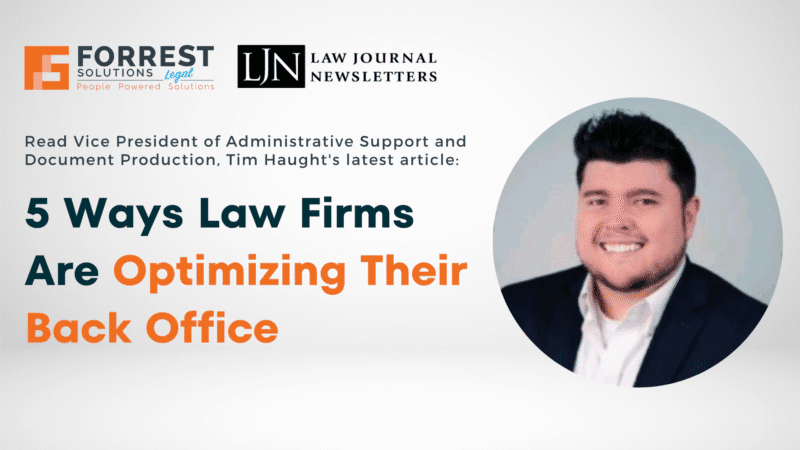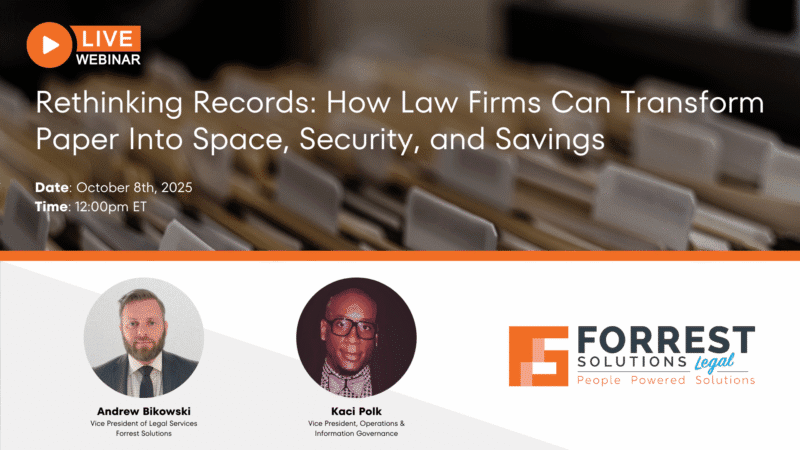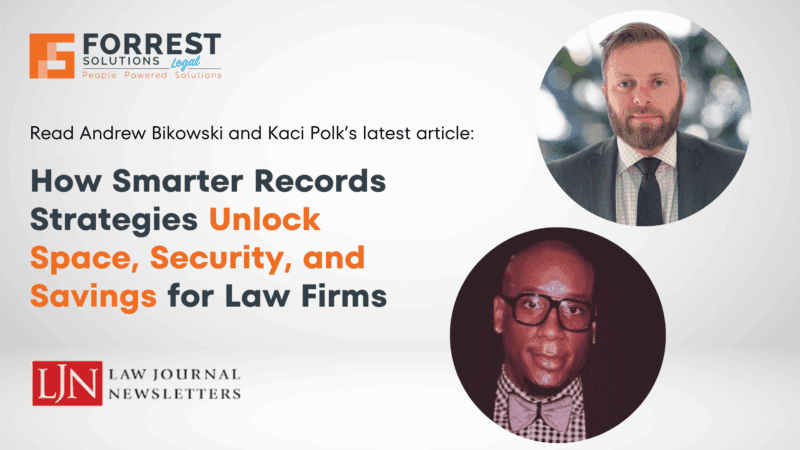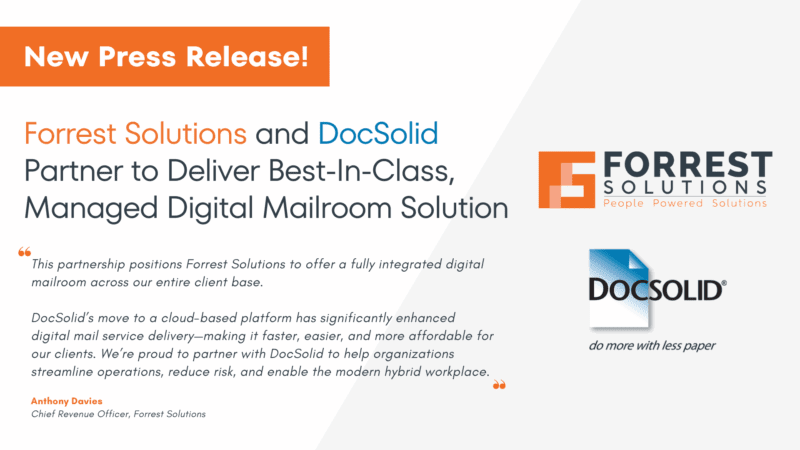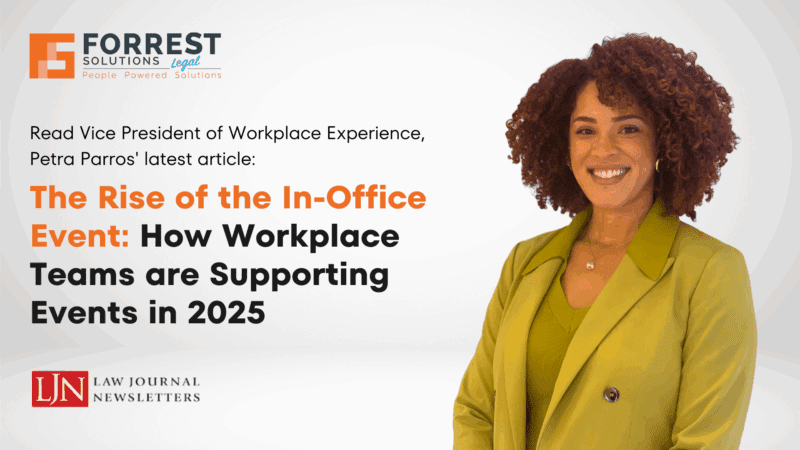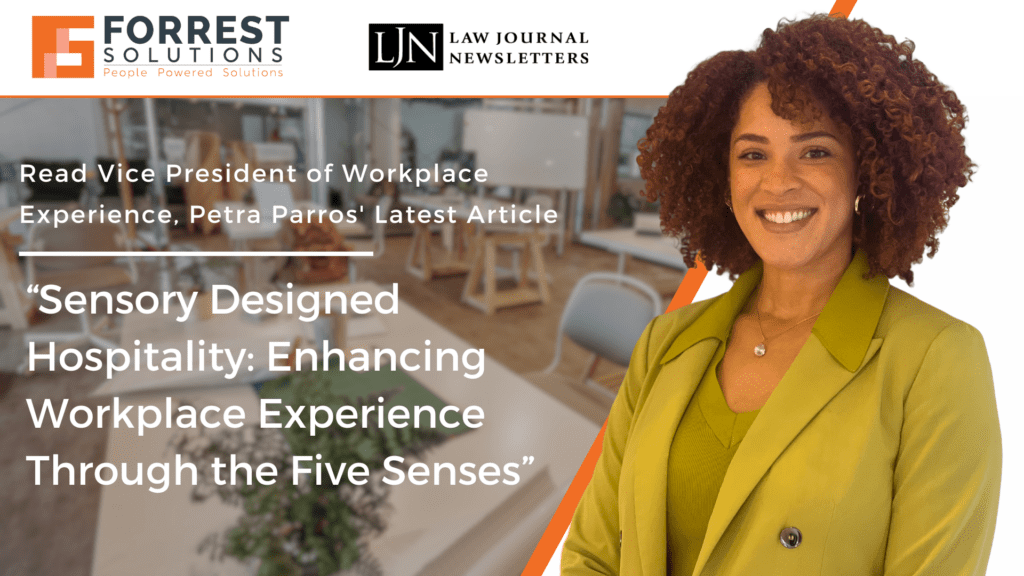
This article originally appeared in Law Journal Newsletters, here.
Organizations are posed with the challenge of making their workplace more than just the physical office space where their employees are “required” to gather. Organizations that have historically had efficiency focused spaces with minimal flare, are now pivoting to create dynamic hubs focused on collaboration, creativity and innovation and client engagement. In 2024, organizations understand that their workplace environment reflects the culture of their organization and are making extraordinary changes to their real estate and fundamental differences in their office operations. But is it working?
Workplace experience is more than desk sharing or free lunch — in its highest form, it is a Ritz-Carlton, 5-star, white glove transformation that turns the office into a destination better than home. For the professional, this means an office space that is not only world-class in its operations, but also service, aesthetics, technology, and, of course, hospitality.
In creating and qualifying the most luxury, 5 star experiences, the Hospitality Industry leverages intentional efforts to indulge all five of the senses. Let’s look at how organizations across industries have maximized their overall hospitality by focusing on initiatives targeted at their professional’s — and guest’s — five senses.
Touch:
Organizations are quickly realizing that an upgrade in real estate is diluted if there is no equal upgrade in technology and hospitality services provided in the workplace. You wouldn’t take your Porsche to Jiffy Lube.
When it comes to touch, an organization’s priorities need to be placed on making the overall office operations a smooth, well-run, efficient machine. This means integrating technology that enhances your professional’s experience, not damper it with unintegrated platforms and 10 step process for simple tasks. In today’s AI revolution, using technology to enhance hospitality has been focused in providing unprecedented, personalized experiences and customized interactions — all at the touch of a button (with an emphasis on a literal 1-touch approach).
Across our professional services clients, AI is now increasingly leverage in the delivery of workplace operations, and we have implemented and integrated a wide range of technologies including:
- Motion detectors and heat sensors notify our support employees if a room has been booked or not in use – optimizing the meeting room spaces.
- Integrated Guest registration, Room and Desk booking technology integrated with heat and noise monitors, so desk booking can suggest the most appropriate space based on personal preferences.
- Facial recognition software has been developed to replace card swipes and improve bottleneck inefficiencies previously held at traditional lobby desks.
Taste:
The great motivator in the first push of return-to-office was pioneered by offering in-office employees with free catered meals. While important at first, today this enhancement is viewed among employees as “taking the easy way out.”
When it comes to providing food and beverage, whether complimentary or not, the crucial factor to the success is the quality of what is provided, not only in taste but diversity and presentation. It is imperative that food and beverage services be constantly changing — featuring high-quality dietary options that the in-office employees cannot get elsewhere.
In an effort to truly create an environment that is better than home, organizations have increasingly leveraged a range of technology to exceed the expectations of their employees in the delivery of their meals. Here are a couple of technologies that have been implemented across our clientele:
- Catering and beverage preferences are stored for individuals so when they travel, and book hoteling desks, their favorite foods are made readily available without asking.
- Uber Eats delivers are enabled with desk deliveries, through integration with room/desk booking software.
Smell:
Perhaps the most important key to successfully recreating a 5-star luxury experience is the office aroma. It is not uncommon for companies like the One Hotel or the Four Season to have a signature scent that can be purchased in the form of a room spray or candle. Research shows that particular scents carry the power to positively influence mood, cognition, and overall productivity in the workplace. Some organizations like Hines have taken this a step further, using scent diffusers that pump a cascade of different scents into the office, lobby, or meeting room depending on the day of the week, time of day, or to reflect the company culture of a visiting prospect or client.
For the internal employee, specific scents, such as citrus or peppermint, have been linked to enhanced cognitive function and improved concentration levels.
Hearing:
A crucial challenge for a lot of employes transitioning from a work from home environment to in-office is the noise level. Employees who are used to working in isolated spaced on their own now have to battle the noise levels of small talk and colleagues taking calls next to them. For HR, Legal, and Client support departments noise levels and confidentiality is paramount. As organizations have begun to upgrade their office real estate — including modernized architecture, glass walls, and new furniture — most developers didn’t take into consideration the sound proofing necessary for day-to-day office operations.
Because of this, law firms across the country have taken efforts into their own hands and added white noise machines or sound proofing to particular offices and meeting areas to 1. drown out outside noise and 2. keep confidential conversations confidential.
Sight:
Perhaps the most obvious consideration in upgrading the office is sight. As organizations have come to terms with the new way people have worked, many of the first changes to entice employees back into the office revolved around upgrading the physical office space. This includes making the office space as visually appealing as possible.
Where organizations have fallen short is focusing more on the physical look of the office and allocating less resources towards the upkeep/maintenance and functionality of the spaces. For our clients, Floor Concierges are trained to have the hospitality eye and focus on even most the minor details on a daily basis to ensure any issues are addressed immediately and proactively. Specific layouts for each room are constantly managed and reset after every use — maintaining quality and brand consistency.
Conclusion:
For the foreseeable future, hybrid is here to stay, but as more organizations obtain employee feedback regarding their in-office experience strategy, we are seeing the effectiveness that indulging the five-senses has on office occupancy, return-to-office, and the overall productivity of employees.
